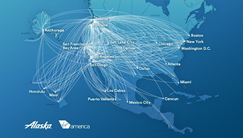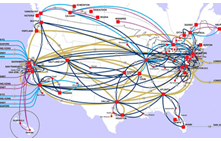- Digital Marketing
- 09.12.2019
Back to Basics: How the Internet Works
In order to be effective at digital marketing, it is best to start by having a solid understanding of how the internet works. Going back to the basics can allow you to take a step back and think on a "bigger picture" level. Whether you are learning about digital marketing for the first time, or you just need a refresh on the inner workings of the internet, we've got you covered!
The internet can be described as the vast connection of computers and servers. At the simplest level, it connects two computers so that they can communicate across large distances. In order to make this process more efficient, we created data centers that are located all over the world in strategic, geographic hubs that allow for transcontinental communications. As much software there is to make this possible, there is also a lot of hardware, such as cables under the streets and on the ocean floors, to satellites orbiting the planet—which is pretty amazing.
HISTORY
Going back to what feels like ancient times… (1960’s), the concept of the internet began between two universities, one in Boston and one in California. They wanted to be able to easily send information back and forth and envisioned a globally interconnected set of computers in which data and programs could easily be accessed on. Sounds pretty familiar right?
Once there was a successful connection between the two locations, data was shared in a sender/receiver model, or “1 to 1” communication.
- Side note -
Data is transmitted in packets of information. It would be like splitting up a large package into smaller boxes so it could be delivered easier. For example, when you download a file you will see “300kb” of “2mb” as it loads, because your computer already knows the final size but it receives the packets in chucks until it is complete.
When we realized that this digital way of communicating was possible, there was an immediate desire to make it scalable, as in all over the world. Ultimately, this global network ended up looking like an airline’s flight route map.


This system was created by telecom engineers that decided there needed to be major hubs, called data centers. One of which is right here in Seattle!
IMPORTANT FEATURES
Universal Resource Locators (URL) are similar to an address on Google maps. Bonsai’s address, 1700 Westlake N Seattle WA, 98109, communicates to anyone in the world our exact location. URLs do the same thing by directing people to the right website.
Domain Name Servers (DNS) are responsible for communicating requests of a website. They efficiently navigate a path to the nearest DNS server, which is synced up with the rest of the network and then continues to direct the request in the right direction. These data centers have an entry for every domain that exists in the world, which is how your browser knows where to get the files needed to display a website on your screen.
Once we understand how the internet works, we can then start to leverage tools like Content Delivery Networks (CDN). Let's say for example we have a customer in Miami. If they request bonsaimediagroup.com, the content is going to have to navigate through a complex and time consuming network. Instead, we can place a copy of the website in a CDN, so when they make the request, the content will be able to travel more directly to the client.
Cloudflare is the same concept as a CDN, but it allows for less communication with the DNS server. When an initial DNS request goes through, it hits cloudflare’s CND-like DNS server as the first route it takes, and BOOM, the request is complete. In this process, a cached version of the website is often being presented. This allows for a much faster delivery of content.
CONClusion
As we all know, the need for speed is real in the digital world. But when we take a step back as the page in front of you is loading, we can take a moment to appreciate the vast infrastructure that is in place to make the internet possible. It has united the world like no other mechanism ever has, but it is ever-changing and the implications for the future are still in question. This is only a snippet of the details and knowledge surrounding the internet, but it's a start! We hope this was helpful on your journey of understanding the basics of the digital marketing world.
Keep your eyes peeled for more Back to Basic blogs from Bonsai. And as always, drop us a line if you have any questions!